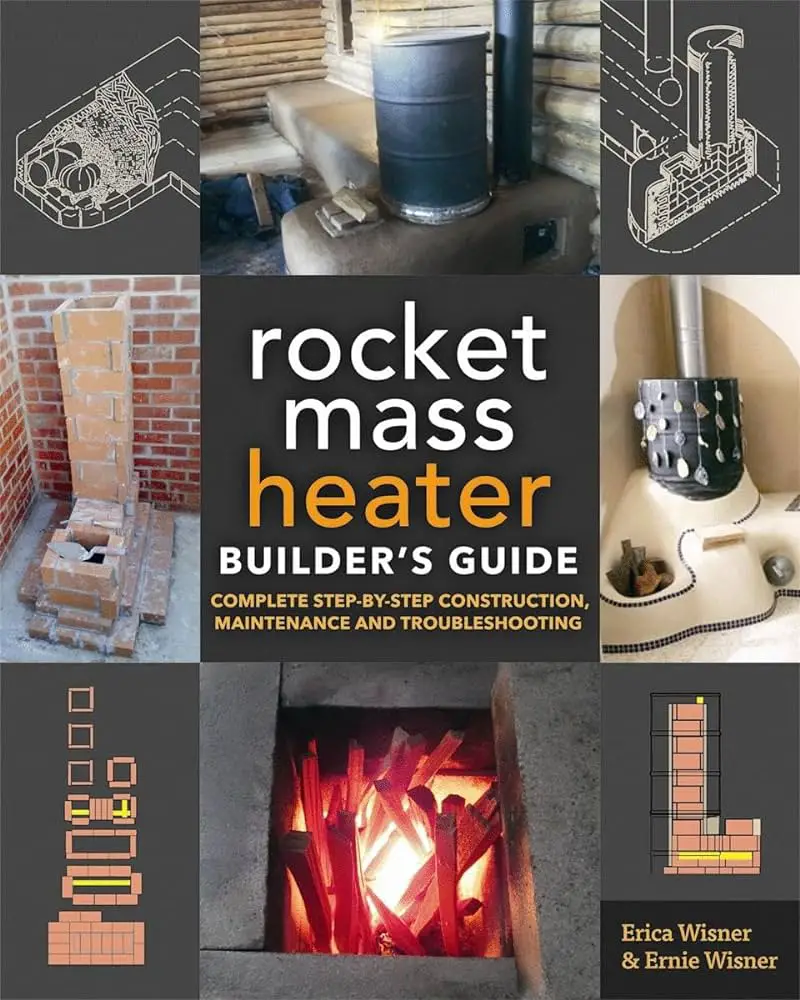To build an efficient wood stove, ensure prewarmed combustion air is added above the fire for high efficiency. Incorporate gas escape combustion for optimal utilization of wood energy.
Building a wood stove efficiently not only conserves energy but also reduces environmental impact. By following the right design and material choices, you can create a cost-effective and eco-friendly heating solution for your home. Whether you opt for a Blaze King Wood stove or a DIY project using recycled materials, maximizing efficiency is key.
Understanding the principles behind wood stove efficiency can help you make informed decisions for a sustainable heating source. With the right approach, you can enjoy a warm and cozy living space while minimizing your carbon footprint.


Credit: theultimatehang.com
Choosing The Right Design
When choosing the right design for your wood stove, it’s crucial to consider factors that contribute to its efficiency. Exploring Efficient Wood Stove Designs and understanding Factors to Consider in Design Selection can help you build a stove that maximizes heat production while minimizing environmental impact.
Exploring Efficient Wood Stove Designs
There are various efficient wood stove designs available, each with unique features and benefits. From secondary burn technology to catalytic converters, exploring different designs can help you find the most suitable option for your heating needs. Consider hybrid models, thermal mass stoves, or even homemade wood stove variations to discover the best fit for your home.
Factors To Consider In Design Selection
- Combustion System: Choose a stove with a combustion system that ensures complete burning of wood gases, increasing efficiency.
- Materials: Opt for high-quality materials like steel or cast iron that can withstand high temperatures and promote heat retention.
- Airflow Control: Look for stoves with adjustable airflow mechanisms to regulate heat output and combustion efficiency.
- Size and Capacity: Select a stove size that matches your heating requirements to avoid under or overworking the stove.
- Emissions: Prioritize designs that produce minimal emissions to reduce environmental impact and ensure cleaner burning.

Credit: www.fieldmag.com
Materials For Construction
When constructing an efficient wood stove, the choice of materials is crucial for ensuring optimal performance and durability.
Benefits Of Using Cast Iron
Cast iron is a popular choice for wood stove construction due to its durability and heat retention properties.
Other Material Options
Aside from cast iron, there are various material options that can be considered for building a wood stove, such as:
- Steel
- Ceramic
- Soapstone
Each material has its own benefits and considerations to be taken into account during the construction process.
Maximizing Efficiency
When it comes to building an efficient wood stove, maximizing its efficiency is crucial. By employing techniques that utilize prewarmed combustion air and implementing effective wood burning tips, you can ensure that your wood stove operates at its highest efficiency.
Utilizing Prewarmed Combustion Air
One effective method to maximize the efficiency of a wood stove is to utilize prewarmed combustion air. By introducing preheated air into the combustion process, the wood stove can achieve more complete and cleaner combustion, leading to increased efficiency and reduced emissions. This technique ensures that a greater portion of the wood’s energy content is converted into heat, resulting in improved fuel economy.
Effective Wood Burning Tips
Employing effective wood burning tips can significantly enhance the efficiency of a wood stove. Ensuring proper seasoning and moisture content of the wood, maintaining adequate airflow, and using the right wood size and placement are vital for optimizing the stove’s performance. Additionally, practicing proper fire-starting techniques and regular maintenance can further contribute to maximizing efficiency and prolonging the stove’s lifespan.
Step-by-step Construction
Discover the step-by-step guide for constructing an efficient wood stove. With a focus on maximizing efficiency, this comprehensive tutorial provides practical tips and techniques for building a reliable and eco-friendly wood stove at your convenience.
Step 1: Preparation And Planning
Before you start building your efficient wood stove, proper preparation and planning are essential. Here are the steps to follow: 1. Gather the necessary materials: Decide on the type of wood stove you want to build and make a list of all the required materials. This may include steel, bricks, stovepipe, insulation, and a door. 2. Choose a suitable location: Select a well-ventilated area for your wood stove. Ensure it is away from any flammable materials and meets the safety regulations of your local building codes. 3. Design the stove: Sketch out the design of your wood stove, taking into consideration its size, shape, and dimensions. This will help you visualize the final product and make any necessary adjustments before construction. 4. Calculate heat requirements: Determine the heat output needed to efficiently warm your space. This will depend on the size of the area you want to heat and the insulation of your building. 5. Obtain necessary permits: Check with your local authorities to see if you need any permits or approvals for building a wood stove. Adhering to regulations ensures your safety and avoids any legal issues.Step 2: Building The Wood Stove
Now that you have completed the preparation and planning phase, it’s time to start building your efficient wood stove. Here’s a step-by-step guide: 1. Construct the firebox: Start by building the firebox, which is the chamber where you will burn the wood. Use high-quality heat-resistant materials, such as steel, to ensure durability and safety. 2. Install the insulation: Insulate the sides and top of the firebox to prevent heat loss. This step is crucial in maximizing the stove’s efficiency and reducing fuel consumption. 3. Create the flue system: Build the chimney and stovepipe system to safely exhaust the smoke and gases. Follow the instructions provided by the manufacturer or consult a professional for guidance. 4. Install the door and controls: Attach the door to the firebox, ensuring it has a tight seal to prevent any air leakage. Install the necessary controls, such as air vents and dampers, to regulate the airflow and heat output. 5. Test for efficiency: Once the construction is complete, perform a test burn to assess the stove’s efficiency. Monitor the temperature, heat output, and any potential smoke leakage. Make any necessary adjustments to optimize performance. Remember, building an efficient wood stove requires precision and attention to detail. If you’re unsure about any step or lack experience, it’s always best to consult a professional or seek guidance from experts in the field. With proper construction, you can enjoy a cost-effective and eco-friendly heating solution that keeps you warm during the colder months.Testing And Safety Considerations
To ensure an efficient wood stove build, focus on proper testing and safety measures. Conduct trial runs and regular maintenance checks for optimal performance and safety compliance. Prioritize efficient burning to reduce emissions and maximize heat output for a sustainable and cost-effective heating solution.
Conducting Test Burns
Before fully utilizing your newly built wood stove, it is crucial to conduct test burns. These test burns will not only help you assess the efficiency of your wood stove but also identify any potential issues that may arise. Test burns involve lighting the stove and monitoring its performance, such as how well it generates heat, how efficiently it burns the wood, and how effectively it distributes heat throughout the space.
During the test burns, pay attention to factors like smoke production, temperature control, and combustion efficiency. Keep a log of your observations to help you make any necessary adjustments and improvements to your wood stove design.
Ensuring Safety Measures
Safety should be a top priority when building and using a wood stove. Here are some safety measures you need to consider:
- Clearances: Ensure that your wood stove complies with the recommended clearance distances to reduce the risk of fire hazards. Refer to local building codes or manufacturer guidelines for the specific clearance requirements.
- Chimney and Ventilation: Proper chimney installation and ventilation are essential for safe wood stove operation. Install a chimney that meets the necessary height and diameter requirements to facilitate proper draft and exhaust. Regularly inspect and clean the chimney to prevent creosote buildup and potential fire hazards.
- Fireproof Surroundings: Create a fireproof area around the wood stove to prevent accidental fires. Use non-combustible materials like tiles or bricks as a protective barrier. Ensure that any nearby flammable items are kept at a safe distance from the stove.
- Carbon Monoxide Detection: Install carbon monoxide detectors in your home to monitor the levels of this odorless gas. Carbon monoxide is produced during incomplete combustion and can pose a serious health risk if not detected early.
- Fire Extinguishers: Keep fire extinguishers readily accessible near your wood stove to quickly extinguish any small fires that may occur. Make sure everyone in your household knows how to use a fire extinguisher properly.
- Regular Maintenance: Regularly clean and inspect your wood stove to ensure its proper functioning. Remove ash buildup, check for any damaged components, and replace worn-out seals or gaskets. Regular maintenance will not only enhance safety but also improve the efficiency and longevity of your wood stove.
By conducting test burns and implementing proper safety measures, you can ensure the efficiency and safety of your wood stove. Remember that the quality of your wood stove’s performance largely depends on careful testing and adherence to safety guidelines.

Credit: housework.store
Frequently Asked Questions For How To Build Efficient Wood Stove
How Can You Maximize The Efficiency Of A Wood Stove?
To maximize a wood stove’s efficiency, prewarm combustion air above the fire to utilize volatiles for combustion.
What Is The Most Efficient Wood Stove Design?
The most efficient wood stove design maximizes combustion by adding prewarmed air above the fire. This method ensures the combustion of the gases that escape from the wood, resulting in higher efficiency. CAST IRON is the best material for durability and performance.
What Is The Best Efficiency For A Wood-burning Stove?
The most efficient wood-burning stove can maximize its efficiency by adding prewarmed combustion air above the fire. This allows for the combustion of volatile gases that escape from the wood. Additionally, using cast iron as the material for building the stove is a popular choice due to its durability.
What Is The Best Material To Build A Wood Stove?
The best material to build a wood stove is cast iron. It is sturdy, durable, and maintains its shape over time. Cast iron has always been a popular choice for wood burning stoves due to its raw and rustic surface.
How Can You Maximize The Efficiency Of A Wood Stove?
To maximize the efficiency of a wood stove, you can add prewarmed combustion air above the fire, which helps to release and combust gases from the wood.
Conclusion
In crafting an efficient wood stove, you have the potential to minimize energy consumption and reduce environmental impact. By understanding the principles of combustion and incorporating high-efficiency design elements, you can create a powerful tool for sustainable heating. With these strategies, you can elevate the performance of your wood stove and contribute to a greener future.